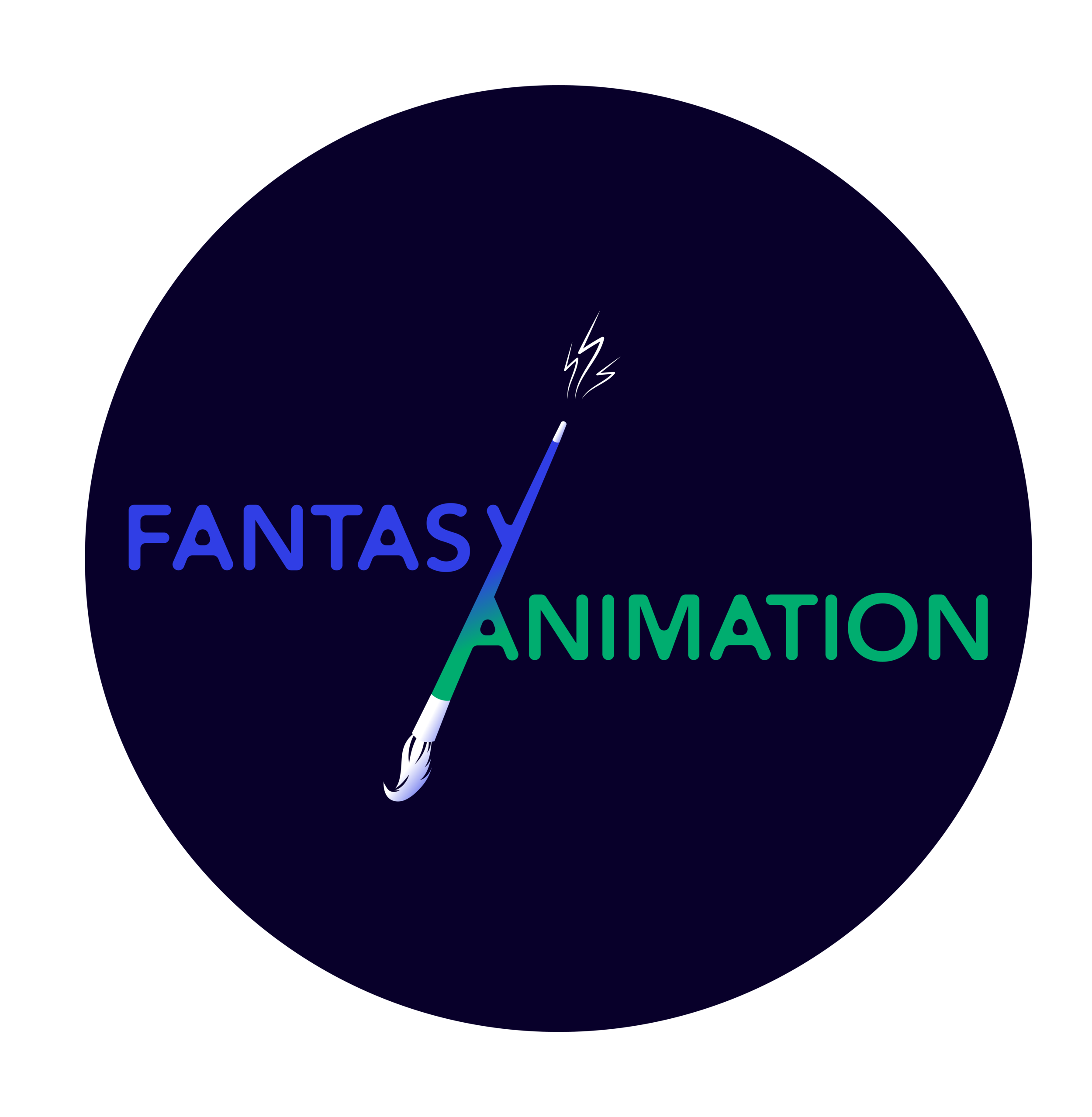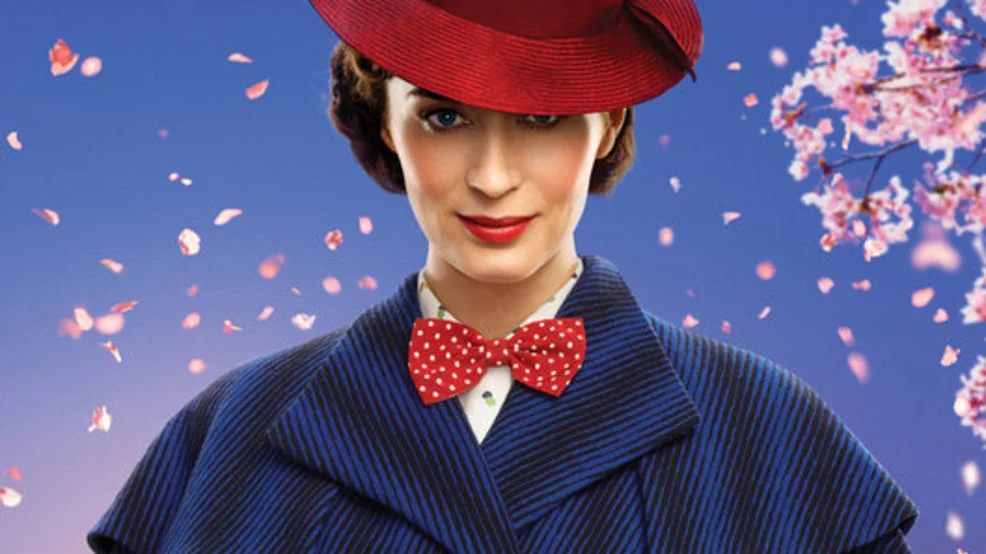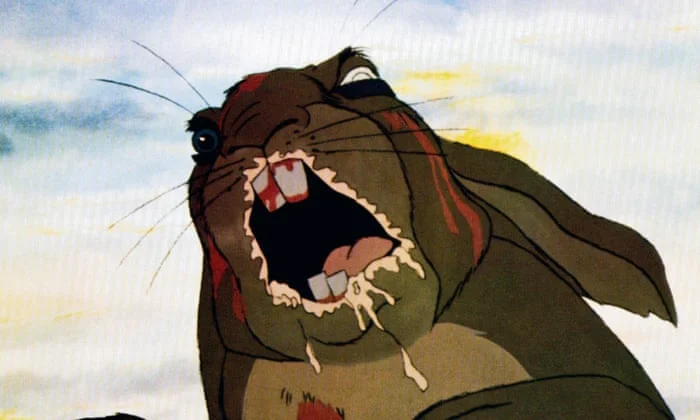The intersection of fantasy and animation is increasingly also an intersection of nationalities and cultures. The world’s best known animation studios often look beyond their own cultures for inspiration, exploring and representing people, mythologies and folklore from across the globe. Japan’s Studio Ghibli, for example, frequently adapt Western sources, creating fantasy-inflected variations on European countries (Howl’s Moving Castle [Hayao Miyazaki, 2004]) or indeterminate settings bearing both Japanese and European influence (Kiki’s Delivery Service [Hayao Miyazaki, 1989]; Arrietty [Hiromasa Yonebayashi, 2010]; When Marnie Was There [James Simone & Hiromasa Yonebayashi, 2014]).
Read MoreWhen I attended the BFI launch of the book edited by the estimable conveners of this blog, Christopher Holliday and Alexander Sergeant’s Fantasy/Animation: Connections Between Media, Mediums and Genres, I was that annoying person in the audience to ask the first, really obvious, question. Admittedly one that betrayed the fact that I hadn’t yet read their book (something now, ahem, rectified) and also my own research interests and agenda. Isn’t all animation, due to its constructed nature, in some way fantasy? And if so, if animation implies fantasy and fantasy implies animation, I queried, where does that leave animated documentary? And that, dear reader, is how you find yourself press-ganged into writing a blog post…
Read MoreBack in November, Variety caused a furore online by reporting that Chris Meledandri, the Illumination founder and Despicable Me (2010) producer charged with overseeing DreamWorks Animation after its acquisition by Comcast, was planning on ‘rebooting’ the Shrek series. ‘Reboot’ typically refers to starting from scratch with a film franchise, recasting the characters and restarting the narrative. If Variety had read their own interview, they would have noticed that Meledandri actually said that ‘while you certainly could make a case for a complete reinvention, I find myself responding to my own nostalgic feelings of wanting to go back to those characterizations’.
Read MoreIt is a common mistake to suggest that Disney’s Mary Poppins (Robert Stevenson, 1964) is perfect. She never once claimed to be such a thing. In fact, I imagine she would have been quite indignant at the very suggestion. “Practically perfect”, that was the expression she used. Not perfect, but close enough to perfect for us not to quibble too much over the difference.
Read MoreIf animation and documentary make an anomalous couple, fantasy, animation and documentary make an extremely far-fetched threesome. Yet, in Justin Hardy’s mockumentary The Last Dragon (2004) they conjoin.[1] This TV movie purports to be a partially animated documentary that attests to the existence of one of fantasy’s iconic symbols: the dragon.
Read MoreI have to admit that the first time I watched Electricity (Bryn Higgins, 2014) I was not prepared for my emotional response. This was not only because the film presented its subject material and female protagonist in a compelling way, but also because it appeared to chime with my own research interests into fantasy genre and British cinema (Fig. 1). I was later delighted to contribute a chapter on the film to the Fantasy / Animation collection, as it certainly embraces both themes, and challenges existing ideas and preconceptions attached to aesthetics, genre and national cinema.
Read MoreSeveral years ago I had the good fortune to interview the animator Barry Purves about his work. He made the point that if you give a person a mask it’s only then that they’ll you the truth about themselves. This interplay between playfulness and truth certainly has a vital role in one of Robert Zemeckis’ most fascinating moviemaking achievements: Who Framed Roger Rabbit (1988).
Read MoreAnimated fantasy film Watership Down (Martin Rosen,1978) represents something of a critical cultural conundrum that underwrites its complex status as a children’s feature. On the one hand, this hand-drawn fable - that follows a cross-countryside journey made by a colony of rabbits - represents the best of British animation, with an impressive voice cast (featuring John Hurt, Richard Briers, Simon Cadell and Nigel Hawthorne) giving life to a beautifully evocative cel-animated style that fully demonstrates the pre-digital artistry of paint-and-ink animation production. On the other hand lies its well-established identity as an emotionally traumatic experience, one that trades in themes of political uprising, Fascism and grief, all the while being scored to graphic images of blood, gore, and death.
Read MoreAt first sight, Alex Strangelove (Craig Johnson, 2018) starts as a predictable genre film, part of a growing cluster of Netflix teen movies such as The Kissing Booth (Vince Marcello, 2018) and To All the Boys I’ve Loved Before (Susan Johnson, 2018) available on the streaming platform. It opens with a montage sequence replicating what Roz Kaveney terms as the “anthropology shot” (Kaveney 2006: 56): students representative of social groups and cliques are introduced, as in the opening scenes of 10 Things I Hate About You (Gil Junger, 1999) and Not Another Teen Movie (Joel Gallen, 2001).
Read MoreWhen Christopher Holliday and I first conceived of Fantasy/Animation: Connections Between Media, Mediums and Genres, the animator Ralph Bakshi sprung to mind immediately as an example of an individual whose work I thought would benefit from the methodology we were hoping to inspire within both our edited collection, and through future collaborations on this research network. If you are unfamiliar with who Bakshi is, chances are you are nonetheless a fan of either an animator or live-action filmmaker who has been inspired by his productions.
Read MoreFor the most part the evening air, schools and events will be peppered with the sounds of those going about their Halloween business. You might engage with one of the many cinematic offerings, or a spooky audio drama where the images evoke terror but more importantly the sound of classic horror. In the year where we celebrate 200 years of Mary Shelley’s Frankenstein (1818), written when she was 19 years old, you may even revisit or be introduced to classic horror via the sounds of the monster’s re-animation. The classics we refer to are usually remembered as a visual feast evoking terror but the sound of the film adaptations of Frankenstein also deserve their place in the homage to horror classics.
Read MoreThe House with a Clock in Its Walls (Eli Roth, 2018) marks director Eli Roth’s first foray into family-friendly fantasy, following a career established largely within horror cinema thanks to his directorial debut Cabin Fever (Eli Roth, 2002) and the Hostel films (Eli Roth, 2005-2007), which consolidated the much-maligned and highly graphic “torture porn” subgenre as a strong current of post-millenial Hollywood (see Jones 2013; Kerner 2015).
Read MoreThis one day Character as Character - Understanding and Appreciating People in Films symposium organised by Dominic Lash (University of Bristol) and Hoi Lun Law (Independent Scholar) took place on Saturday 13th October at the University of Bristol; drawing inspiration for its title from V.F. Perkins’ seminal Film as Film: Understanding and Judging Movies (1972 [1993]). Although the influence of Perkins was only fleetingly acknowledged, the symposium as a whole proved a great showcase for the close and attentive analysis of an otherwise neglected aspect of Film Studies.
Read MoreWhen Sony announced that they were making a solo vehicle for Venom, one of Spider-Man’s most popular villains, independent of Spidey’s ongoing film series set in the Marvel Cinematic Universe, many fans were baffled. Not only is Venom an antagonist first and foremost, but more than any other villain his existence is predicated entirely on his relationship with Spider-Man. He is a dark inversion of Peter Parker, sharing his powers and his appearance, and his origin and motivation centre squarely around his hatred of the hero.
Read MoreThe shifting place of fantasy within contemporary animation allows us to make some preliminary discriminations about how fantasy’s own icons and images function in relation to the shaping of Hollywood studios and their brand identity. The continued business strength of the U.S. animation industry in the post-millennial period thanks to Pixar Animation Studios, DreamWorks Animation and Blue Sky - as well as the parallel renaissance of Disney Feature Animation - has provided a growing number of critically and commercially successful test cases that showcase where fantasy does (and does not) appear in popular animated media, but also how fantasy has become a default and highly durable viewing strategy utilised by audiences in determining the precise terms of studio authorship.
Read MoreImagine if films had no music, would the cinematic medium survive the way it has today? While music can be used as an aesthetic component that enhances the film experience, is also a storytelling device and a language that serves similar purposes to the verbal language in the film context, although it is rarely perceived as such. Despite this, many directors such as Alfred Hitchcock claimed that, in some instances the music works better than spoken words. Both music and imagery are equal - but different - agents of story, which together unite to create a phenomenal end product or a film being.
Read MoreThese days, I spend a lot of time thinking and writing about Snow White and the Seven Dwarfs (David Hand, 1937). Call it a professional interest during its eightieth anniversary year. But here, rather than talk specifically about Snow White, instead I would like to look at my favourite non-Disney reference to it: Violet Newstead’s (Lily Tomlin) Snow White-themed revenge fantasy in the 1980 Feminist political comedy classic 9 to 5 (Colin Higgins, 1980). Though any working woman can tell you that 9 to 5 has never lost its relevance (sadly, given that it’s a 38-year-old film about sexism in the workplace), in the current socio-political climate and historical era (with #MeToo, wage stagnation and job insecurities for many in the middle and lower classes, etc.), 9 to 5 has become more relevant than ever — so much so that, in July 2018, Jane Fonda announced a sequel to the film with herself, Lily Tomlin, and Dolly Parton reprising their original roles in what will be (presumably) a look at how things have changed – and how they’ve stayed the same – for working women since 1980.
Read MoreA wealth of staff and students both past and present came together across two days at the University of Warwick to celebrate and reflect upon the work of V. F. Perkins (1936-2016). It was Perkins’ immeasurable contribution to Film Studies and his writing on popular cinema that would come to form the basis of the superlative Film as Film Today: On the Criticism and Theory of V. F. Perkins conference co-organised with due fondness and feeling by James MacDowell (University of Warwick) and Andrew Klevan (University of Oxford).
Read MoreOver the last eighteen months or so myself and Katharina Boeckenhoff (University of Manchester) have been engaged in archival research on the German animator Lotte Reiniger for a project about craft and animation. During that time I was grateful to be asked to write a chapter in Fantasy/Animation: Connections Between Media, Mediums and Genres on Reiniger by Christopher Holliday and Alexander Sergeant. While this chapter was not directly informed by the archival research we had been involved in, it raised a number of interesting thoughts and potential challenges that informed my writing.
Read MoreIn the past twelve months, cinema audiences have been treated to not one, but two films based on the eponymous children’s book character, Winnie-the-Pooh. Both focus on male protagonists and explore the psychological effects of growing up and the responsibilities associated with adulthood. Both are live action dramas with frequent forays into animated fantasy sequences. And both films are British / American co-productions with a strong emphasis on the past, nostalgia and heritage.
Read More



















